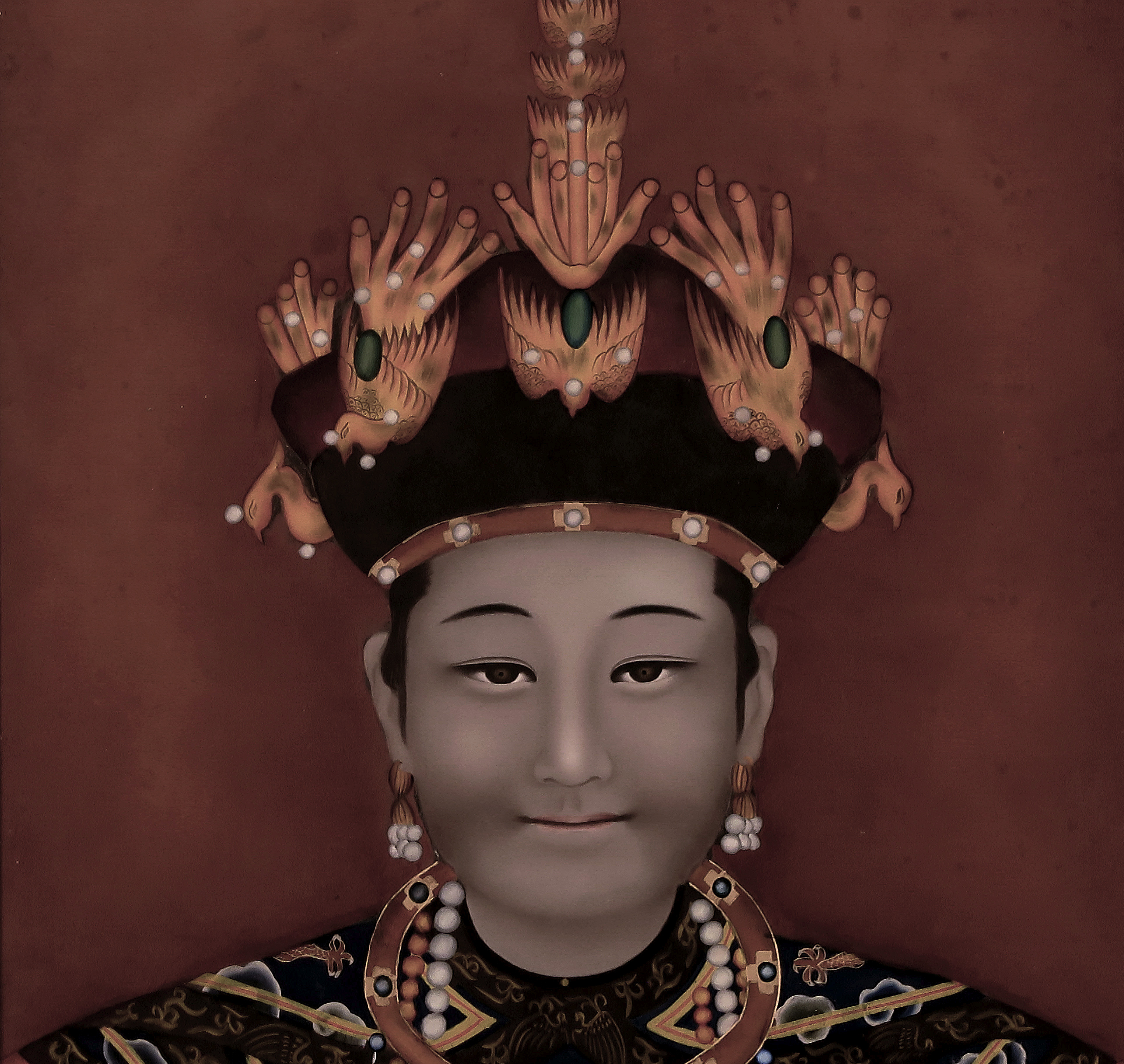Description
The technique of reverse glass painting developed in China during the late 1770s when a famous painter, Guan Zuolin, picked up the European technique; and, thereby, created an art style that has become far more associated with China than elsewhere in the world. It was an extraordinary development that adjusted immediately to the traditions of China, especially with regard to ancestor worship. The veneration of one’s ancestors followed from the belief that one’s ancestors had an influence on the lives of their descendants and that, by taking care of their portraits, this same influence would have a positive effect on their lives. This also was believed to “cultivate kinship qualities like filial piety, family loyalty and continuity of the family line.” For this reason, ancestor portraits are also referred to as “Chinese Dignitaries.”
The Chinese art of reverse glass painting is brilliantly on display in this Ancestor Portrait whose subject is dressed in the old Imperial style. Glass paintings are conceptualized as “copies in reverse.” Thus, the artist had to begin by painting the finest details, such as the design of the elaborate headdress or the intricate fabric design on her costume. The last portion of the painting to be accomplished would be the dark orange/brown background. Every aspect of the overall portrait would have been intricately planned in advance…there would have been no improvisation or corrections possible. Obviously, this required an artist with an absolute mastery of this complex craft. It is very difficult today to find an ancestor portrait in good condition…one, for example, with no flaking paint which is very difficult to repair. The beautiful rich colors of this artwork make it a standout of the quality framed ancestor portraits. It is in its original wood frame; and, while very old, as the frame attests, it is slightly unstable as it is backed with the original wood board, kept in place by an original metal hook. The decorative metal hook on top is kept in place by hooks placed in the frame itself. To continue to enjoy this brilliant artwork, it should be kept out of sunlight in a stable environment, for example, not outside or over a fireplace.








